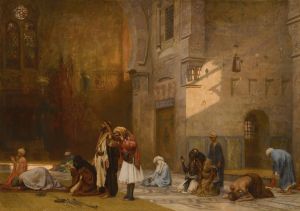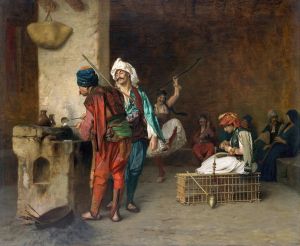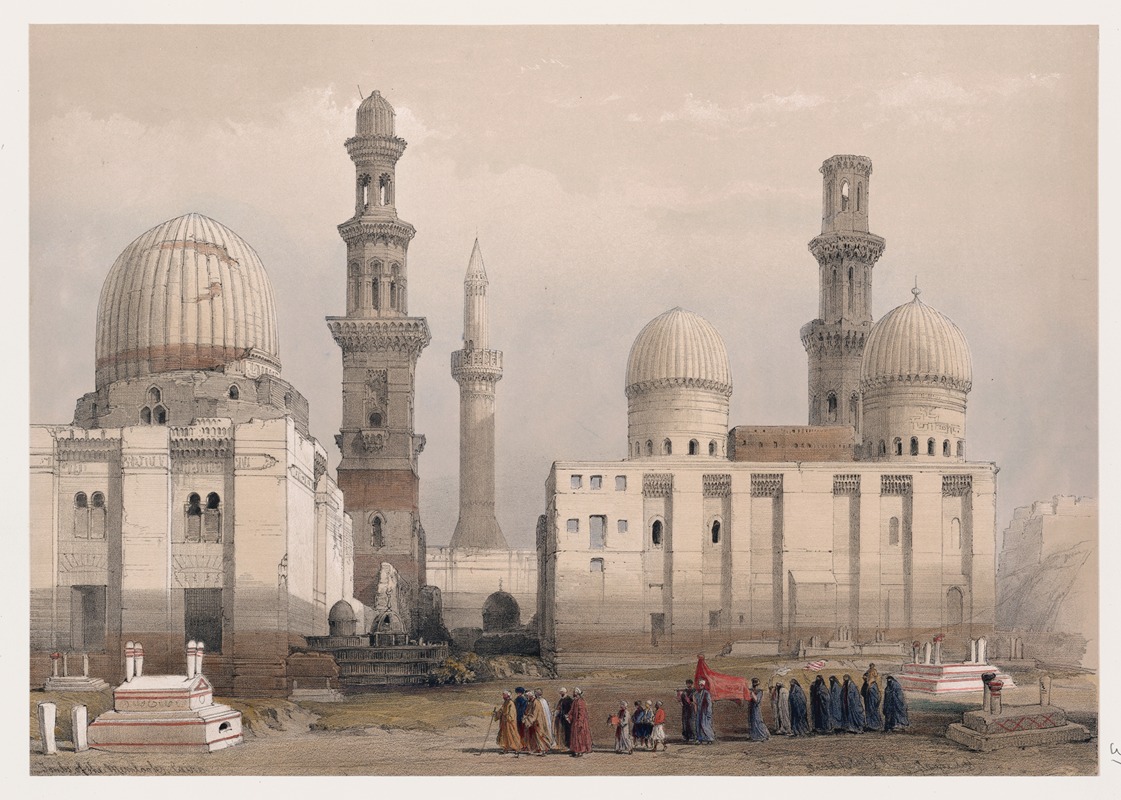
Tombs of the Memlooks [Mamelukes], Cairo
A hand-painted replica of David Roberts’s masterpiece Tombs of the Memlooks [Mamelukes], Cairo, meticulously crafted by professional artists to capture the true essence of the original. Each piece is created with museum-quality canvas and rare mineral pigments, carefully painted by experienced artists with delicate brushstrokes and rich, layered colors to perfectly recreate the texture of the original artwork. Unlike machine-printed reproductions, this hand-painted version brings the painting to life, infused with the artist’s emotions and skill in every stroke. Whether for personal collection or home decoration, it instantly elevates the artistic atmosphere of any space.
"Tombs of the Memlooks [Mamelukes], Cairo" is a lithograph created by the Scottish artist David Roberts in the 19th century. Roberts, renowned for his detailed and romanticized depictions of Middle Eastern and Mediterranean landscapes, produced this work as part of his larger series documenting his travels in the region. The lithograph is based on a sketch Roberts made during his journey to Egypt in 1838-1839, a period when European interest in the Middle East was growing due to both scholarly pursuits and colonial ambitions.
The artwork depicts the tombs of the Mamluks, a prominent military caste that ruled Egypt from the 13th to the early 16th century. These tombs are located in the "City of the Dead," a vast necropolis in Cairo that has been used as a burial site for centuries. The Mamluks were known for their architectural patronage, and their tombs are characterized by intricate Islamic designs, domes, and minarets. Roberts' lithograph captures the grandeur and solemnity of these structures, set against the backdrop of the arid Egyptian landscape.
David Roberts' works were published in a series titled The Holy Land, Syria, Idumea, Arabia, Egypt, and Nubia, which was released between 1842 and 1849. The lithographs were produced by Louis Haghe, a prominent Belgian lithographer, and were highly regarded for their technical excellence and artistic quality. These prints played a significant role in shaping European perceptions of the Middle East during the 19th century, offering a glimpse into the region's architecture, culture, and history.
Roberts' depiction of the Tombs of the Mamluks is not only an artistic achievement but also a historical document that provides insight into the state of these monuments during the 19th century. While the lithograph reflects the romanticized aesthetic typical of Orientalist art, it remains an important visual record of Cairo's architectural heritage.
Today, David Roberts' works, including "Tombs of the Memlooks [Mamelukes], Cairo," are appreciated for their artistic merit and historical significance. They are held in various collections and continue to be studied by art historians and scholars interested in 19th-century Orientalism and the visual documentation of the Middle East.





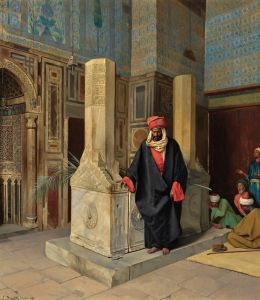
![Great gateway leading to the Temple of Karnac [Karnak], Thebes. [Title vignette, vol. 2]](/imgs/217399/s/david-roberts-great-gateway-leading-to-the-temple-of-karnac-karnak-thebes-title-vignette-vol-2-29844773.jpg)
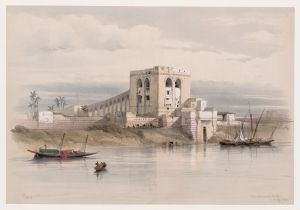
![Dendera [Dandara]. Dec. 1838.](/imgs/217474/s/david-roberts-dendera-dandara-dec-1838-6eb01a73.jpg)
![Excavated temples of Aboosimble [Abû Sunbul], Nubia.](/imgs/217481/s/david-roberts-excavated-temples-of-aboosimble-abu-sunbul-nubia-2ca5e7e8.jpg)
![Gate of the Metwaleys [Bab Zuwayla], Cairo.](/imgs/217486/s/david-roberts-gate-of-the-metwaleys-bab-zuwayla-cairo-669b6ca3.jpg)
![Medinet Abou [Medinet Habu], Thebes. Dec. 5th, 1832.](/imgs/217510/s/david-roberts-medinet-abou-medinet-habu-thebes-dec-5th-1832-9c2109da.jpg)
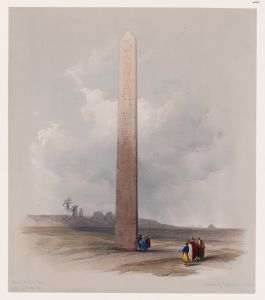
![Ruins. Temple on the Island of Biggeh [Bîga, Bîjah], Nubia.](/imgs/217537/s/david-roberts-ruins-temple-on-the-island-of-biggeh-biga-bijah-nubia-1cd1f41d.jpg)
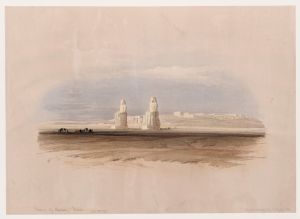
![Temple of Wady Saboua [Wadi al-Sabua], Nubia.](/imgs/217551/s/david-roberts-temple-of-wady-saboua-wadi-alsabua-nubia-52e62db.jpg)
